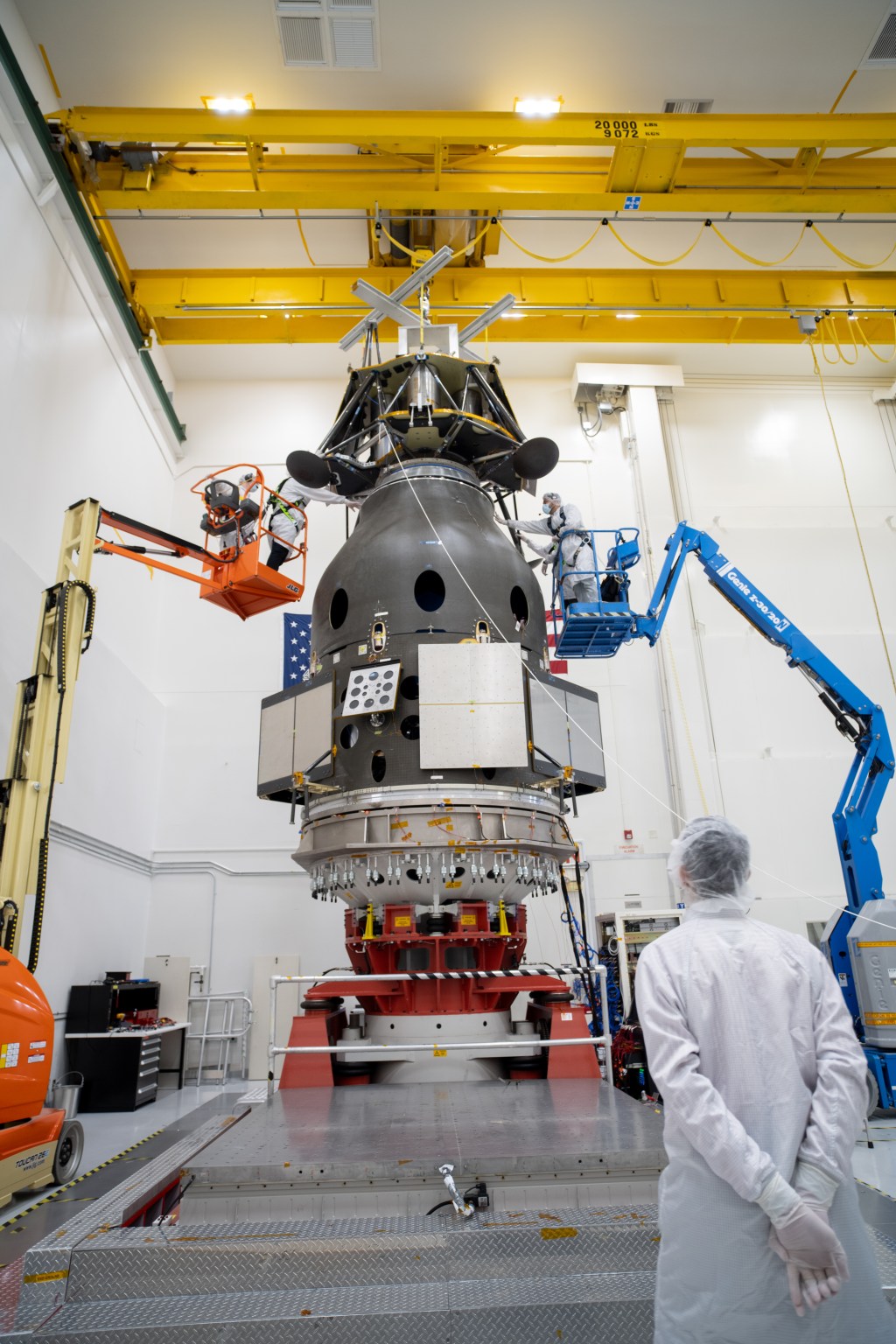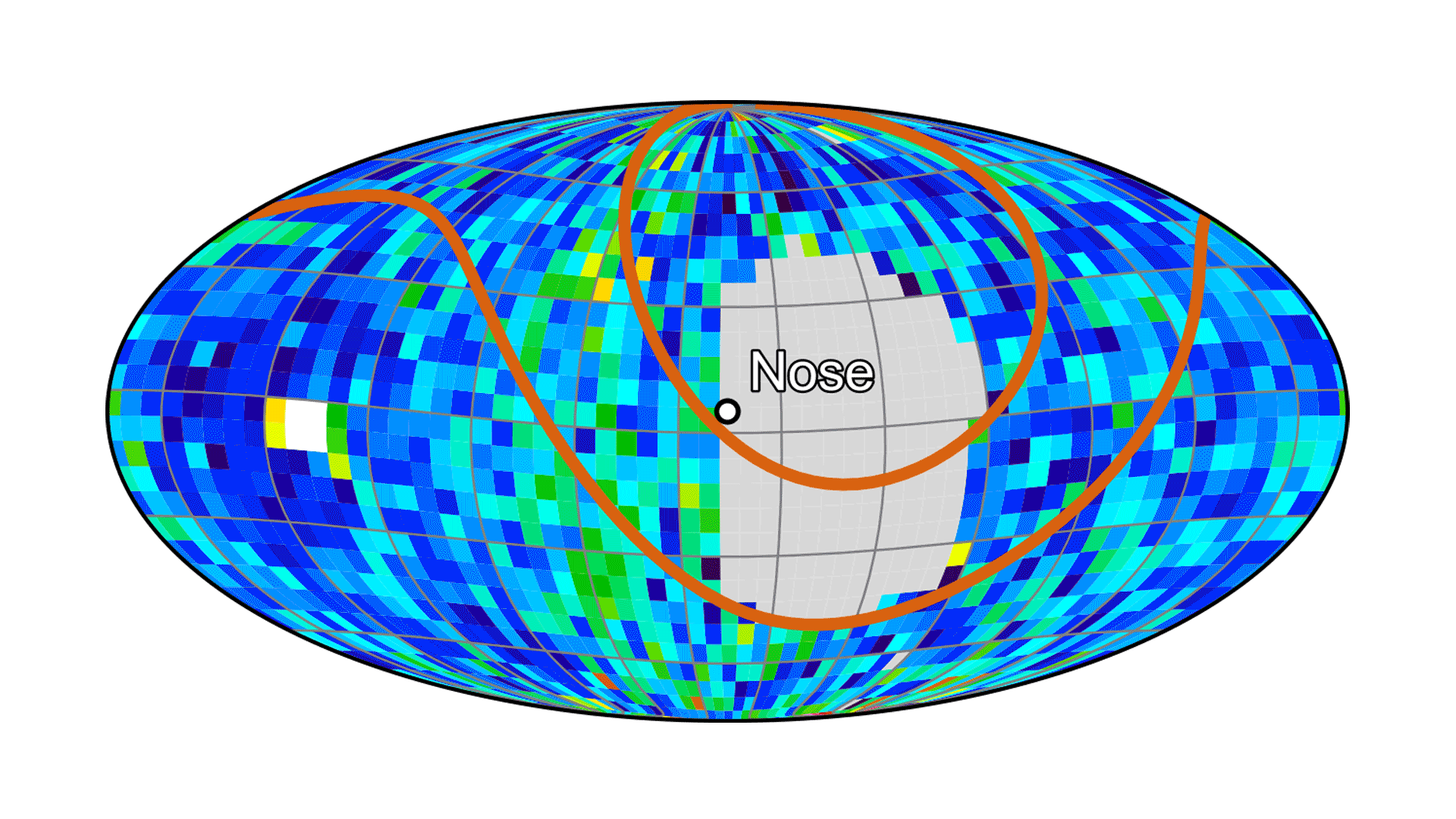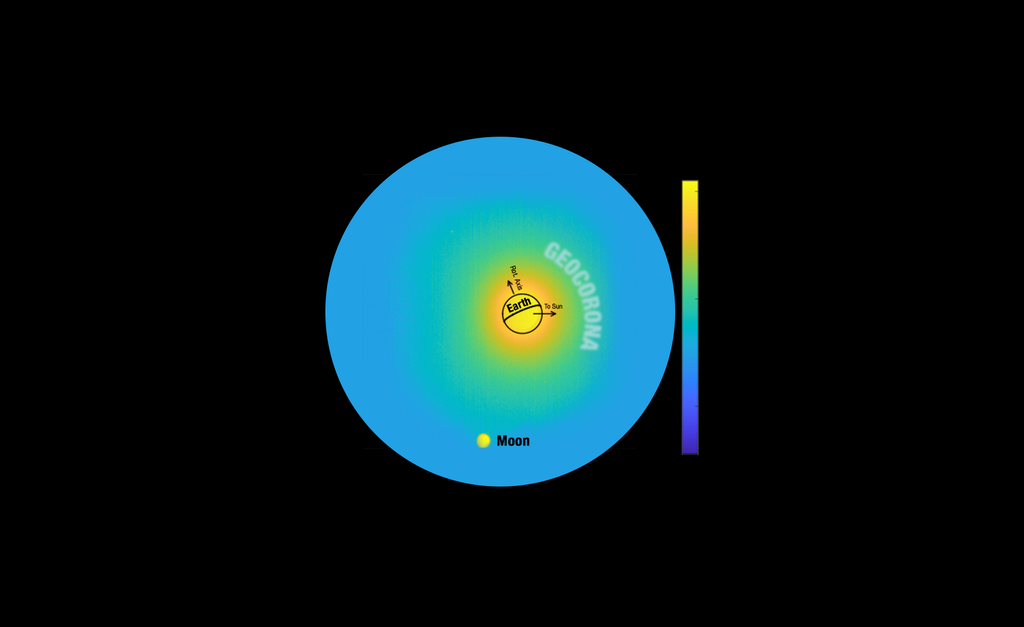1 min read
Cepheid Variable Star in Galaxy M100
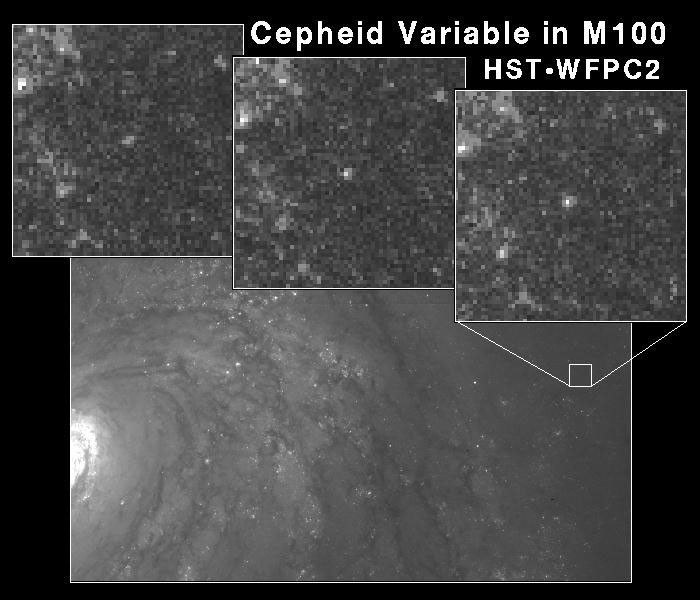
This NASA Hubble Space Telescope image of a region of the galaxy M100 shows a class of pulsating star called a Cepheid Variable. Though rare, these stars are reliable distance indicators to galaxies. Based on the Hubble observation, the distance to M100 has been measured accurately as 56 million light-years (+/- 6 million light-years), making it the farthest object where intergalactic distances have been determined precisely. Hubble's high resolution pinpoints a Cepheid, which is located in a starbirth region in one of the galaxy's spiral arms (bottom frame). The top three frames were taken on (from left to right) May 9, May 4, May 31, and they reveal that the star (in center of each box) changes brightness. Cepheids go through these changes rhythmically over a few weeks. The interval it takes for the Cepheid to complete one pulsation is a direct indication of the stars's intrinsic brightness. This value can be used to make a precise measurement of the galaxy's distance.
Only Hubble Space Telescope has the required sensitivity and resolution to detect these "cosmic milepost" type stars out to great distances from Earth, according to astronomers. Typically, Cepheids in a crowded region of a distant galaxy are too faint and the resolution too poor, as seen from ground-based telescopes, to be detected clearly. Hubble was used to make twelve one-hour exposures, timed carefully in a two-month observing window, to discover 20 Cepheid variable stars in the M100 galaxy. Though M100 is the most distant galaxy in which Cepheid variables have been discovered, HST must find Cepheids in even more distant galaxies before accurate distances can be used to calculate a definitive size and age for the universe.
Technical Information: The Hubble Space Telescope image was taken with the Wide Field Planetary Camera 2 (WFPC 2). This black and white picture was taken at visible light wavelengths.
Target Information: M100 (100th object in the Messier catalog of non-stellar objects) is a member of the huge Virgo cluster of an estimated 2,500 galaxies. The galaxy can be seen by amateur astronomers as a faint, pinwheel-shaped object in the spring constellation Coma Berenices.
About the Object
- R.A. PositionR.A. PositionRight ascension – analogous to longitude – is one component of an object's position.12h 22m 54.94s
- Dec. PositionDec. PositionDeclination – analogous to latitude – is one component of an object's position.15° 49' 19.49"
- Object NameObject NameA name or catalog number that astronomers use to identify an astronomical object.M100, NGC 4321
- Release DateOctober 26, 1994
- Science ReleaseHubble Space Telescope Measures Precise Distance to the Most Remote Galaxy Yet
- CreditDr. Wendy L. Freedman, Observatories of the Carnegie Institution of Washington, and NASA
Related Images & Videos
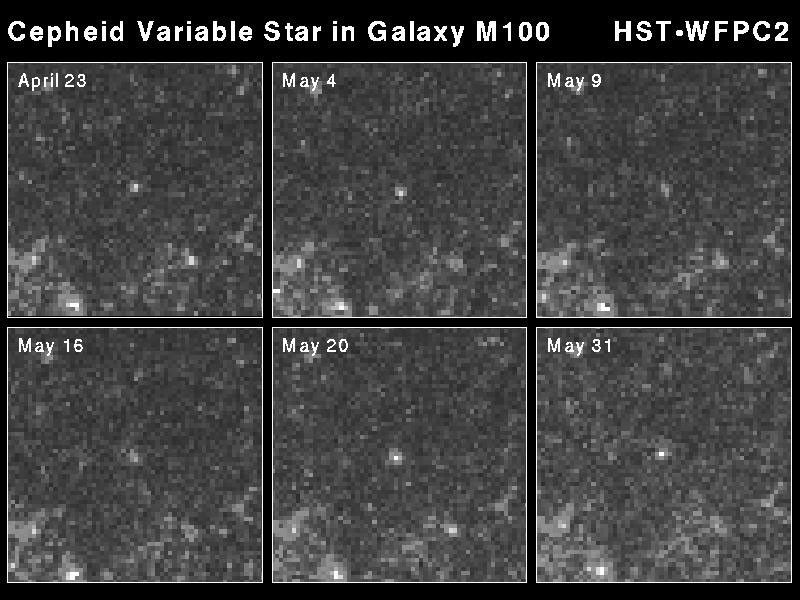
Hubble Snapshots Capture Pulsation Rate of a "Stellar Milepost"
This sequence of images taken with NASA's Hubble Space Telescope chronicles the rhythmic changes in a rare class of variable star (located in the center of each image) in the spiral galaxy M100. This class of pulsating star is called a Cepheid Variable. The Cepheid in this...

The Spiral Galaxy M100
An image of the grand design of spiral galaxy M100 obtained with NASA's Hubble Space Telescope resolves individual stars within the majestic spiral arms. (These stars typically appeared blurred together when viewed with ground-based telescopes.) Hubble has the ability to resolve...
Share
Details
Claire Andreoli
NASA’s Goddard Space Flight Center
Greenbelt, Maryland
claire.andreoli@nasa.gov











